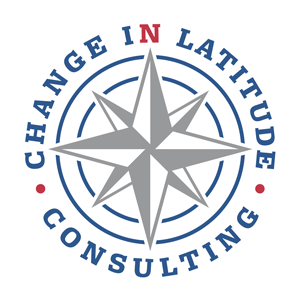In my recent blog post: Continuous Improvement: Let’s Learn from our Failures, I discussed a few of the reasons, according to research and my own personal experience, that most continuous improvement efforts fail. In this post I want to focus on one of those failure points: training. Once again, my hope is to share what some research on the topic says and my personal experiences, in the hope that we can begin an honest dialogue among continuous improvement practitioners, leaders and associates who have experienced first-hand the power of continuous improvement, but also the effects when a program fails in one or more of the areas discussed.
First let me start by saying that I LOVE training. I was fortunate enough in my Army career to be an instructor at the Army Retention School. I had an amazing time teaching 8-week in-house courses to Soldiers that wanted to become a Career Counselor in the Army. I also spent a lot of time traveling to Army posts around the world teaching a one-week course on the Army retention program. When I was working to obtain my master black belt certification, I taught the black belt course several times and fell in love with training others on continuous improvement. In the years since, I have probably trained thousands of people on various levels of continuous improvement and have had the honor, for the last several years, of teaching various courses at the college level. As I mentioned, I love to train others and watch their eyes light up as they learn new things, especially continuous improvement.
I have also seen several organizations turn continuous improvement training into nothing more than a “belt factory” where they work to certify as many employees as possible in continuous improvement. In the 1999 article: Developing strategic continuous improvement capability, John Bessant and David Francis discuss a Behavior Model that came out of the Continuous Improvement Research for Competitive Advantage (CIRCA) project based at the University of Brighton in the UK. One output of the seven-year study, which looked at CI and its implementation across a wide-array of organizations and sectors, was a behavior model describing the evolution of continuous improvement capability within an organization; from a level 0 (no CI activity) to a level 5 (a true learning organization). When you look at how training fits into the model, the two types of training mentioned are training in basic problem finding and solving as well as training in basic CI tools and techniques. While certifying employees as green or black belts arms them with basic problem finding and solving and basic CI tools, it often becomes more about getting a certification and less about how to use the information that is taught.
One organization I worked with began a green belt training program with much fanfare and packed classrooms of eager employees. Over the next few years, they trained and certified hundreds of employees, mostly junior associates and mid-level managers, and sent them back to their “day jobs” armed with new tools in which they were challenged to improve their processes. The problem is, after the training less than 10 percent of the employees completed a follow-on project or kaizen and most merely hung their green belt certification near their desk and added the accomplishment to their resume. The training program was stopped and rather than re-focusing their training efforts, they merely stopped doing any continuous improvement training.
In another organization, employees were told that when they came to the green or black belt training, they needed to have a project idea signed off on by their manager. This was to ensure that appropriate rigor was applied to the project that would be done as part of the employee’s certification. However, what we found was that many of the projects weren’t really scoped as a project at all and had very little alignment with organizational goals. Most of the projects were merely a “just do it” and offered the employee little opportunity to make a difference in their workspace.
The result of such training programs, in which certification is valued over an in-depth working knowledge of structured problem-solving approaches and the tools needed to improve processes, is devastating to an organization’s continuous improvement program. First, trained employees go back to their “daily job” without a clear understanding of how they should use what they learned and what next steps should be. Leaders are frustrated because they allowed one or more of their employees to attend training that took them away from their desk and months later have little to show for it. Finally, continuous improvement professionals are frustrated because they spend the time and resources on conducting training in the hopes of arming employees with the knowledge and tools necessary to improve their processes only to have them be a “one and done” in terms of a project or kaizen and worse yet, not become and advocate for the CI program.
I recommend a couple of things to ensure that a continuous improvement training program is successful. First, spend time determining how you are going to measure success. We say in the CI community that “you can’t improve what you don’t measure”, yet I see a lot of CI training programs launched with no pre-determined measurement system in place that defines what success looks like. I would also argue a definition of success in terms of training that focuses purely on volume is not a good measurement. Second, layer your continuous improvement training in both subject matter and audience. In other words, have different types of training for different audiences and situations. I argue that a front-line associate should get a different type of training than a leader. Ideally, we want the front line associate to leverage continuous improvement to continuously improve their processes while we want the leader to leverage continuous improvement in their daily work in addition to being an advocate for the program.
In addition, we want to have different training for an organization that is introducing CI to its workforce versus one that is launching Kaizen and needs to arm those participating in those activities with the tools necessary for a successful event. Finally, focus less on belts and more on knowledge. Start with training courses such as Continuous improvement overview, continuous improvement fundamentals and continuous improvement for leaders. Once you have a base of knowledge established, then look at expanding to belt certification program.
I am curious what your experiences have been with continuous improvement training programs. What went well with programs that were successful? How did you measure success? What opportunities did you find? Finally, how do you propose we set a course for a truly valuable training experience for our most valuable asset in which they leave the classroom with the knowledge and motivation to look to improve their processes on a daily basis and become an advocate for the organization’s continuous improvement program.

